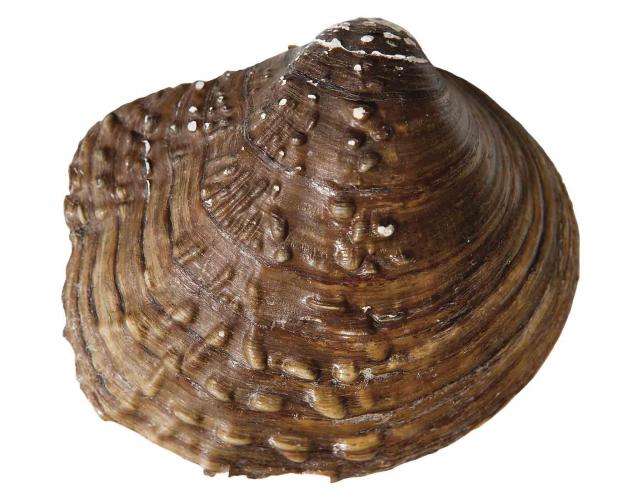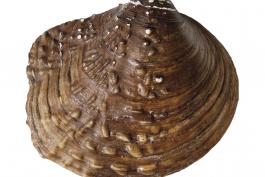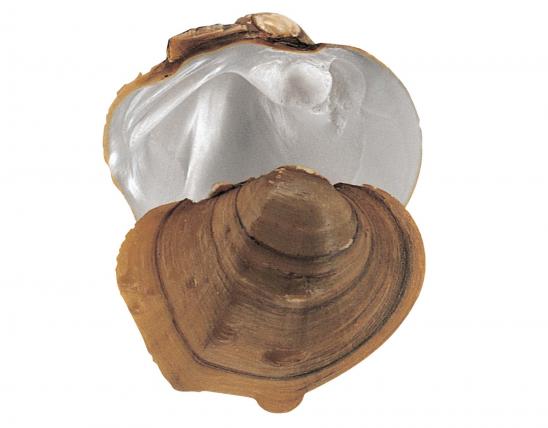
Shell is thick, heavy, nearly round, compressed (in shells from small rivers) to inflated (from large rivers) and covered with many bumps; anterior end rounded, posterior end squared off. Umbo is slightly raised above hinge line. Epidermis is yellowish-brown to greenish-brown, becomes darker with age; greenish rays may be present in juveniles. Inside shell beak cavity deep and wide; massive pseudocardinal teeth, widely spaced and deeply grooved; lateral teeth short and straight or slightly curved; nacre (lining) deep coppery-purple.
Similar species: Pimpleback and wartyback are less massive and less compressed, have white nacre and smaller pseudocardinal teeth. Mapleleaf has a definite sulcus, white nacre and smaller pseudocardinal teeth.
Adult length: 2-4 inches.

Mainly in the Ozarks, in almost all the rivers arising on the Salem and Springfield plateaus. Rare elsewhere, though it is also found in the Salt and Fabius rivers.
Habitat and Conservation
Medium to large rivers with moderate current in sand, gravel and cobble.
Food
Algae and fine particles of decaying organic matter; extracts nutrients and oxygen from water drawn into the body cavity through a specialized gill called the incurrent siphon; sediment and undigested waste are expelled through the excurrent siphon.
Status
Moderately common in specific regions, although degrading water quality and watershed destabilization interfere with the survival of this and all freshwater mussels.
Life Cycle
Males release sperm directly into water. Females downstream siphon sperm into the gill chamber, where eggs are fertilized. Eggs mature into larvae (called glochidia), which discharge into the water and attach to host fish. The tiny mussel eventually breaks away and floats to the bottom of the stream, and the cycle repeats.
Human Connections
Mussels are excellent biological indicators of water quality because they are long-lived and relatively immobile, accumulating contaminants in water that can be scientifically analyzed. Because of its coppery-purple nacre, this species was not used in the commercial button industry.
Ecosystem Connections
Mussels act as nature's “vacuum cleaners,” filtering and cleansing polluted waters. They are also an important food source for other species in the aquatic environment.




























